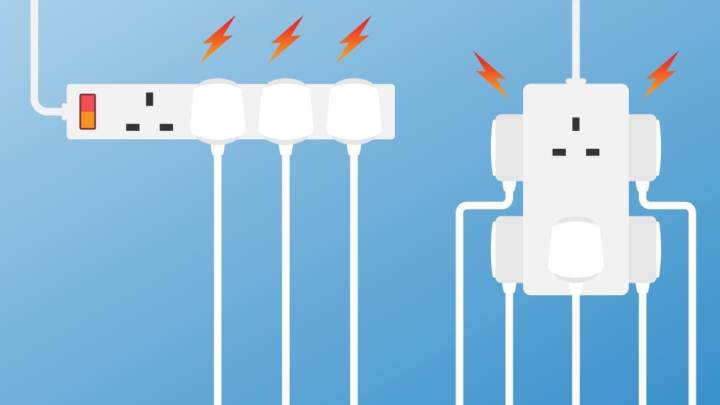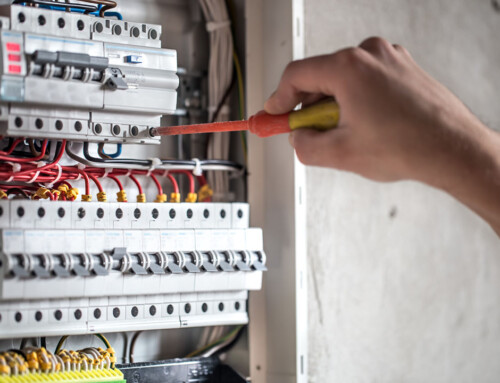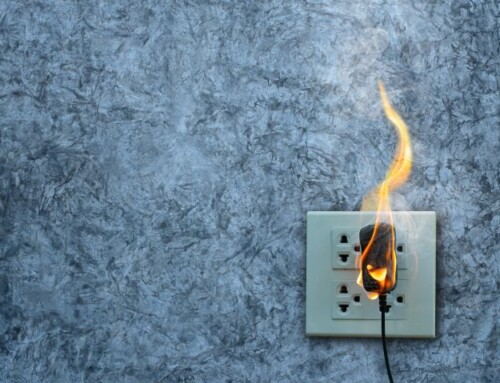Table of Contents
Do you know that a power surge lasts for only a few millionths of a second? But it carries thousands of volts to fry your circuit boards and ruin your expensive electronic appliances. That is why surge protection is non-negotiable. Two approaches work as surge suppressors. Either you can install a whole-house surge protector, or you only make provisions for the circuits of your vulnerable appliances. Read on to know which method is better and why.
What is a Whole-house Surge Protector?
A whole-house surge protector is installed in the main service panel of your house. It acts as a buffer between a power surge and your circuits. Modern power surge protectors come with features like alarms or lights to indicate the wave and thermal fuses. You can install it yourself if you have the requisite electrical knowledge.
Individual Circuit Protectors vs Whole-house Surge Protectors
A whole-house surge protector is mandatory to protect your appliances from the havoc a power spike can create. If you protect only some equipment with an individual circuit protector, you risk the others. However, a two-way extra-safe solution is also popular. That is to install a whole-house surge protector along with an additional plug-in power surge protector for your sensitive appliances like computers, sound systems, and TV.
Advantages of Whole-house Surge Protector
Still not convinced with the idea of a surge suppressor for the entire house? Go through these compelling reasons for getting one for your home right away!
- Layers the Whole House: It provides layered surge protection from the electric panel to the point of use. It also prevents damage to your electronic appliances on shared circuits like a TV and sound system. In contrast, a plug-in protector can’t save another device on a shared circuit. A power conditioner with a surge suppressor is best to safeguard your appliances on a shared circuit.
- Protects Your Sensitive Gadgets: In a modern house, many gadgets are sensitive because they are dependent on microcircuit boards. A power surge can deeply harm them. The number of personal devices like computers and entertainment systems increased drastically in the last decade. With so many sensitive appliances in your house, a whole house surge protector safeguard you from a massive loss in case of a spike.
- Protects Entire Electrical System: Apart from protecting your electrical appliances, a whole house surge protector also safeguards the entire electrical system of your house. This is because it will prevent any internal surge as well from getting to other circuits. It will send that spike back to the breaker panel. To ensure that the surge suppressor is effective for all outlets, keep checking your GFCI and AFCI every month.
- Protects Against Internal Surges: Did you know that 80% of power surges are internal? They are short in transition and come from one of your home appliances like AC. They are not damaging every time. But recurrent surges can gradually degrade the performance of the appliance. The whole-house surge protector safeguards your appliances from these harmful internal surges.
- Suits All Voltage Needs: Different houses have different voltage needs. An 80kA-rated surge protector can efficiently serve a typical 120-volt service house. If you have subpanels in your home, you can use a power surge protector with half the kA rating of the central units. If you get many storms, it will be wise to invest in an 80kA rating protector. So there is an option of a whole-house surge protector for every household.
Factors to Consider When Getting a Whole-house Surge Protector
Following are the technical and safety factors you should keep in mind to get the best whole-house surge protector:-
- UL & CSA Certified: Always buy a surge protector which is either UL (Underwriters Laboratories) or CSA (Canadian Standard Association) certified or both. They are safe in terms of their reaction speed and current.
- Continuous Operating Voltage: The power surge protector should be capable of swiftly switching to either the nominal voltage or the maximum voltage. The MCOV (maximum continuous operating voltage) should also be higher.
- Surge Protection Ratings: The UL and CSA test approve the voltage protection rating of a surge suppressor. The minimum rating should be 10KA. And protectors rated 30KA or above are considered sufficient for power surge through storms.
- NEMA Rating: The NEMA (National Electrical Manufacturers Association) rates the enclosure of electric devices in the U.S. It certifies them in terms of indoor or outdoor usage safety. For example, a NEMA 1 device is suitable indoors, and a NEMA 4X is good for indoors and outdoors. Always check the NEMA rating of the protector before buying it.
- Advanced Feature: Modern SDPs have advanced features like LED display to show if the unit has failed or is still operational. Some models flash additional lights to indicate faults. Some are equipped with an alarm. Ask about these extra features when you buy the protector.
To Sum Up!
A whole-house surge protector is the best option to secure your house against harmful power surges. Therefore, you should install it at the earliest. You can do it yourself if you know the nitty-gritty of electronic work. Otherwise, call a licensed electrician.






